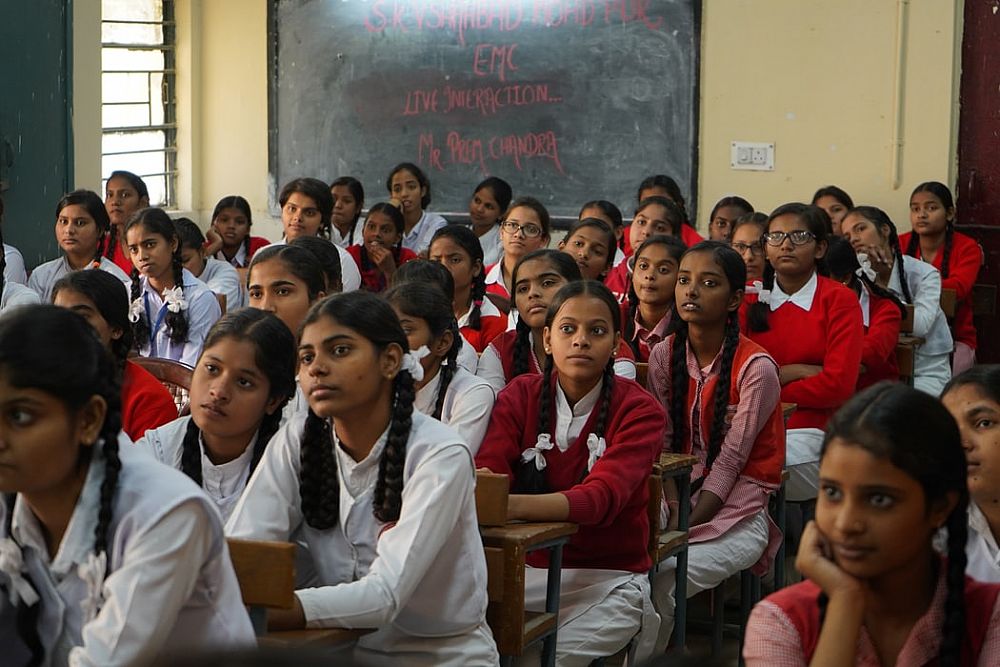Classroom Management as a Milestone of Effective Teaching and Learning

Effective teaching and learning emanate from a conducive classroom learning environment. It is a cornerstone of all teaching and learning processes.
Table of Contents
According to Wikipedia 2010, there are ten possible ways to deal with difficult students.
1. Stay in contact with your parents.
2. Use proximity to limit negative actions.
3. Have a defined student expectation.
4. Choose the best time to discipline.
5. Try to emphasize the learner.
7. Utilize your teaching colleagues.
8. Make classwork a non-issue.
9. Try the peer tutor technique.
Do you want to teach English abroad? Take a TEFL course today!
This post was written by our TEFL certification graduate Thomas M. Please note that this blog post might not necessarily represent the beliefs or opinions of ITTT.
What's Classroom Management?
Classroom management is a term used to describe the process of ensuring that classroom lessons run smoothly without disruptive behavior from students compromising the delivery of instruction. It creates a set of expectations used in an organized classroom environment. It includes routines, rules, and consequences. Effective classroom management paves the way for the teacher to engage the students in learning. It is a challenging aspect of teaching for many teachers. Challenges in this area cause some to quit teaching. The main reason is negative student attitudes and discipline.
Classroom management is vital because it promotes the proper execution of curriculum development, developing the best teaching methods, and implementing them. The time a teacher takes to correct misbehavior as a result of poor classroom management skills results in a lower rate of academic engagement in the classroom.
Also Read: Is the Western parenting style better than the Eastern style?
The teacher should come up with techniques to manage the class effectively to avoid unnecessary disruption and waste of teaching and learning time:
Corporal punishment is an old traditional method of disciplining learners but nowadays is no longer permitted. They are negative psychological and physiological effects of corporal punishment hence it is has been abolished.
Creating good teacher-student relationships is effective across the whole learner age group. The teacher should give clear expectations and consequences for student behavior,this builds effective relationships such expectations may cover classroom etiquette and behavior,group work, seating arrangements, the use of equipment and materials and also classroom disruptions.
Also Read: 5 Reasons Why Turkey is a Great Destination to Teach English
Preventative techniques create a positive classroom community with mutual respect between the teacher and students. It offers warmth, acceptance, and support unconditionally not based on a student's behavior. Favoritism and bias should not exist. Fair rules and consequences should be established and students are given frequent and consistent feedback regarding their behavior. To enforce this, it should be an agreement between the teacher and students on how to treat one another.
Another effective strategy in dealing with classroom management is using rewards and praise to inform students about their behavior rather than as a means of controlling student behavior.
Some schools of thought advocate authoritative style as the best form of classroom management for it encourages an adequate, warm, and nurturing classroom environment. In the hands of an effective teacher, the authoritative style of classroom management can produce socially competent and responsible students.
Also Read: Young Learners: 5 Creative/artistic Activities to Do During COVID-19

According to Wikipedia 2010, there are ten possible ways to deal with difficult students.
1. Stay in contact with your parents.
That is some behaviors need the support of parents to be corrected before they poke their ugly head and ruin the child. Children will realize the seriousness of their misdeeds when their parents are called to the school and notified about the child's misbehavior.
2. Use proximity to limit negative actions.
The educator should be near the students timeously during the classroom discourse. This helps in monitoring students with disruptive behavior before they disturb the lesson in progress. The teacher should be mobile and visible to all learners during the lesson.
3. Have a defined student expectation.
That is lesson objectives and tasks assigned must have clear results and guidelines. Learners should not wonder as to what exactly they are expected to achieve.
Also Read: Should I take a TEFL course online or in a classroom?
4. Choose the best time to discipline.
Stopping a lesson in progress to discipline a misbehaving learner may sometimes disturb the smooth flow of the session, taking the attention of other attentive learners. The teacher might just tell the misbehaving learner to stop the disruptive actions and inform him or her to deal with the issue after the lesson.
5. Try to emphasize the learner.
Some students misbehave as a way of attention-seeking maybe because they come from uncaring families where there is no love, recognition, and compliments. They want to be seen that they are capable of drawing everyone's attention. The teacher should take note of such learners and understand their situation, therefore it should not be too harsh when disciplining them.
6. Build on common ground.
Treat all students as equals and show bias or favoritism.Children are sensitive to deeds and will lose respect for you. They may resort to misbehavior as a way of punishing you. That is revenging.
7. Utilize your teaching colleagues.
Some disciplinary problems can be resolved at school by other teachers instead of inviting parents to school. Colleagues such as senior teacher, deputy principal or subject departmental heads can be asked to intervene to deal with a problematic child.
8. Make classwork a non-issue.
The teacher should make it very clear to learners that failing to do or submit assigned classwork is a serious offense.If learners can commit themselves to do classwork, then most of the disciplinary challenges faced in class will be manageable.
9. Try the peer tutor technique.
Capable learners should assist the weak ones in doing their classwork be it reading or writing. This will help very much in dealing with disruptive behavior since learners appreciate and understand better what they are told by colleagues.
10. Never give up.
The teacher should not surrender to disruptive learners. Surrendering will make them become mini heroes in class and the majority of the learners will follow suit, therefore destroying teaching and learning in that particular class forever.
Do you want to teach English abroad? Take a TEFL course today!
Classroom management is a protracted struggle that requires great commitment and effort from the teacher. Proper planning and implementation of good strategies will yield positive results in classroom management.
Apply now & get certified to teach english abroad!
Speak with an ITTT advisor today to put together your personal plan for teaching English abroad!
Send us an email or call us toll-free at 1-800-490-0531 to speak with an ITTT advisor today.
Related Articles:
- Where to Earn the Highest Salaries Teaching English Abroad
- The Top 8 Cities in France For Teaching English Abroad
- The 10 Best Destinations for Teaching English Abroad in 2018
- The Best Government Programs For Teaching English Abroad
- How to Legally Teach English in France With a Student Visa
- What Scams to Look Out for When Looking for TEFL Jobs




